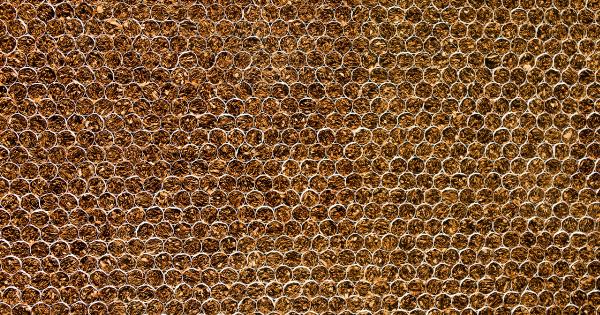Cancer is one of the deadliest diseases that afflict humanity. Cancer cells grow and divide uncontrollably, leading to the growth of malignant tumors that can spread throughout the body.
Despite advances in medical research, cancer remains a significant health threat worldwide, with an estimated 18.1 million new cases diagnosed in 2018 alone.
While genetics plays a role in the development of cancer, there are also many environmental factors that can increase a person’s risk of getting the disease.
One significant factor is exposure to certain chemicals, many of which we encounter daily without even realizing it. In this article, we will explore some of the most dangerous chemicals that put us at risk for cancer and discuss how we can limit our exposure to them.
Bisphenol A (BPA)
Bisphenol A, or BPA, is a chemical that is used in the production of certain plastics, particularly those used in food and beverage containers. BPA is known as an endocrine disruptor, meaning that it can interfere with the body’s hormones.
Research has linked BPA exposure to an increased risk of breast and prostate cancer, as well as developmental and reproductive problems.
To minimize your exposure to BPA, avoid using plastic containers or water bottles. Opt for glass or stainless steel containers instead. Also, avoid heating food in plastic containers, as high temperatures can cause the BPA to leach into your food.
Pesticides
Pesticides are chemicals used to kill insects, rodents, and other pests. They are often used in agriculture to protect crops from pests but can also be found in household pest control products.
Pesticides have been linked to various forms of cancer, including leukemia, lymphoma, and brain cancer.
To minimize your exposure to pesticides, consider buying organic produce, which is grown without the use of pesticides. Also, avoid using chemical pest control products in your home, and opt for natural alternatives instead.
Phthalates
Phthalates are a group of chemicals that are used in the production of plastics, especially those used in personal care products such as soaps, shampoos, and lotions.
Like BPA, phthalates are endocrine disruptors, and research has linked them to an increased risk of breast and prostate cancer, as well as developmental and reproductive problems.
To minimize your exposure to phthalates, read the labels of personal care products carefully, and avoid products that contain phthalates. Opt for natural alternatives, such as coconut oil or shea butter, instead.
Asbestos
Asbestos is a naturally occurring mineral that was commonly used in building materials, such as insulation, roofing, and flooring, before it was discovered that exposure to asbestos fibers can cause cancer.
Asbestos exposure is linked to lung cancer, mesothelioma, and other respiratory diseases.
To minimize your exposure to asbestos, avoid disturbing building materials that may contain asbestos fibers. If you must work with materials that may contain asbestos, wear protective equipment such as a respirator and follow proper safety procedures.
Formaldehyde
Formaldehyde is a colorless gas that is used in the production of various household products, including plywood, carpeting, and furniture. Formaldehyde exposure is linked to an increased risk of leukemia and other forms of cancer.
To minimize your exposure to formaldehyde, opt for natural building materials instead of those containing formaldehyde. Also, ensure that your home is well-ventilated to minimize the concentration of formaldehyde in the air.
Perfluorooctanoic acid (PFOA)
Perfluorooctanoic acid, or PFOA, is a chemical used in the production of non-stick cookware and waterproof clothing. PFOA exposure is linked to an increased risk of kidney and testicular cancer.
To minimize your exposure to PFOA, avoid using non-stick cookware and opt for stainless steel or cast-iron cookware instead. Also, avoid purchasing waterproof clothing that contains PFOA.
Radon
Radon is a radioactive gas that occurs naturally in the soil. Radon exposure is linked to an increased risk of lung cancer.
To minimize your exposure to radon, ensure that your home is well-ventilated. Also, consider hiring a professional to test your home for radon levels.
Arsenic
Arsenic is a toxic chemical that occurs naturally in the environment. Exposure to arsenic is linked to an increased risk of skin, lung, bladder, and liver cancer.
To minimize your exposure to arsenic, avoid drinking water from wells that may be contaminated with arsenic. Also, avoid handling certain pesticides and herbicides that contain arsenic.
Mercury
Mercury is a naturally occurring metal that can be found in certain fish and seafood. Exposure to mercury is linked to an increased risk of brain and kidney cancer.
To minimize your exposure to mercury, avoid consuming fish and seafood that are high in mercury, such as shark, tuna, and swordfish. Opt for low-mercury alternatives such as salmon, catfish, and shrimp.
Conclusion
There are many dangerous chemicals that we encounter daily that put us at risk for cancer. The best way to protect yourself from these chemicals is to be aware of them and take steps to minimize your exposure.
Opt for natural alternatives whenever possible, and read labels carefully to avoid products that contain harmful chemicals. By taking these steps, you can reduce your risk of cancer and protect your health for years to come.




























